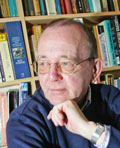So it was interesting to come across the linked piece from Mark Bauerlein on the Brainstorm blog at the Chronicle of Higher Education. He starts:
Over the years, I’ve spent some time reviewing items on reading comprehension tests, evaluating the passages selected as texts and checking the following eight or ten questions for accuracy, validity, etc. It can be a draining activity, scanning rather dry and often remote informational text, then spotting ambiguities or confusions in the questions that must be corrected.
One thing, I’ve found, lightens the load: a little knowledge about the passage material. Just a little bit helps a lot. Indeed, the difference between no knowledge and a little knowledge means much more than the difference between a little knowledge and abundant knowledge.(My emphasis) He then goes on to discuss other people who have made a similar point, and relates it to the curriculum. In so doing he makes a good case for attention to the necessary background knowledge of the humanities without which students cannot get traction, as it were, to engage with more specialist--even scientific--advanced study.
And my problem with Gray is largely that. It's not that I don't know whom he is talking about when he refers to Edmund Burke or Isaiah Berlin (or Michael Oakeshott--one of the reasons I bought the book), it is that for him and probably anyone who read PPE, they are not individual thinkers but representatives of a tradition of thinking, which one is expected to be aware of. It is that allusive quality which makes his writing so rich--as I appreciate when I recognise what he is talking about.
In all the talk about millennial students (there's plenty of references out there), and the supposed imperative to engage with them in the present and to acknowledge that in their world our taken-for-granted knowledge is dead there is little acknowledgement that without an historical perspective to provide an entree to taught material no-one is going to get the allusions and links. No, you can't just ignore the facts because everone can look them up. You can't just teach students to think if they don't know what they are supposed to think about.
It's not only a matter of millennial students; we are becoming increasingly aware that as English becomes the first global language, more and more students and readers and listeners have access to what we say. Great! The more people learn English, the better we can communicate, can't we? Well, no. They are learning Englishes, not one monolithic language with a standard set of cultural referents everyone can be expected to share. Those are not merely the casual references to literature or even current TV shows (I don't get those) which we drop without thinking about it, but catch-phrases and abbreviations and the whole allusive apparatus. Know how difficult it is to make or understand jokes in another language? It's because you need all that apparatus to understand their layered meanings.
Where this is going is to argue for more attention to be paid to helping students orient themselves in general terms to their areas of study. I suppose that is what I find them thanking me for on Learning and Teaching. info And it is what a recent correspondent is asking for with reference to Foucault; of course, sometimes one just has to say it's not worth the effort!


